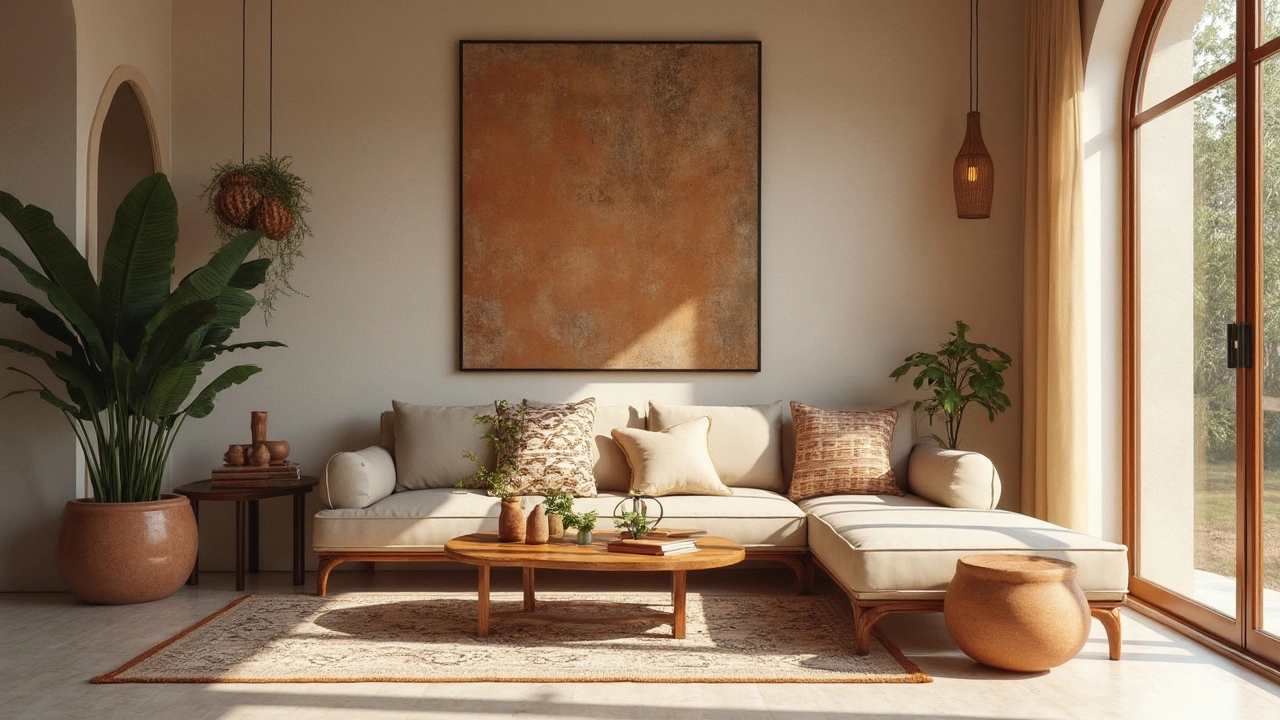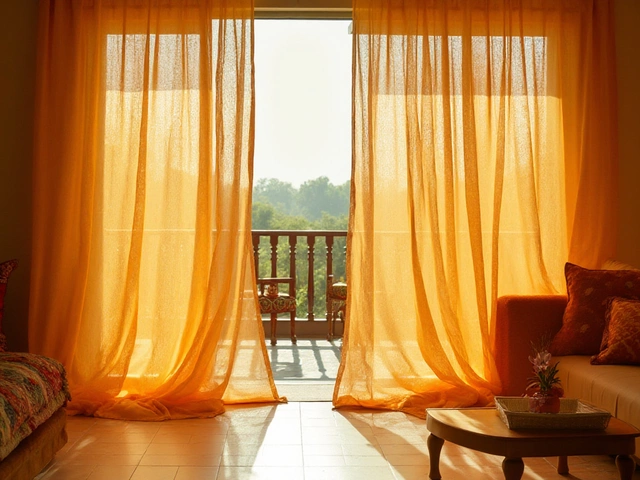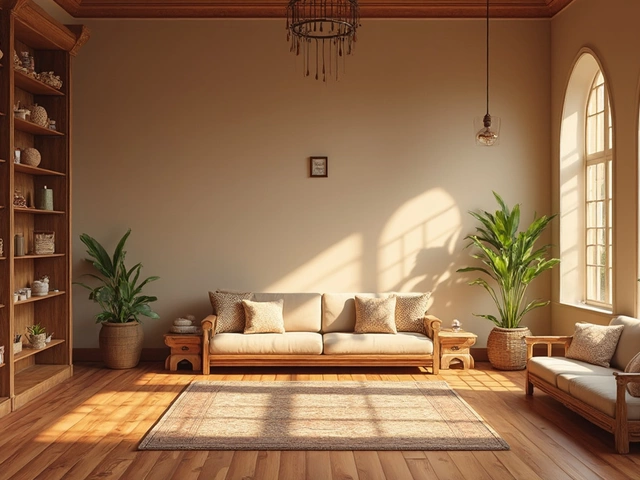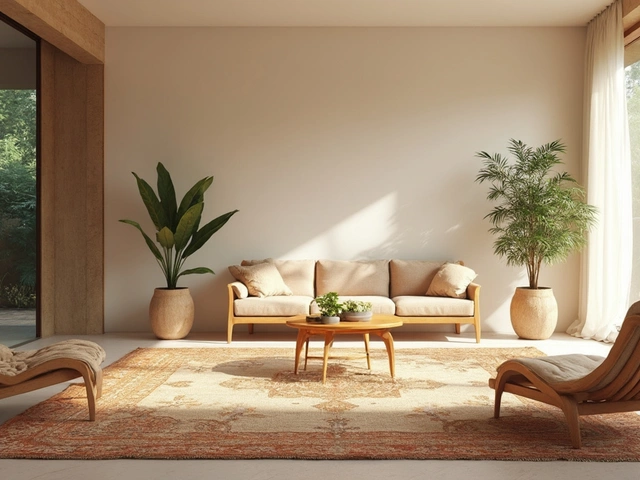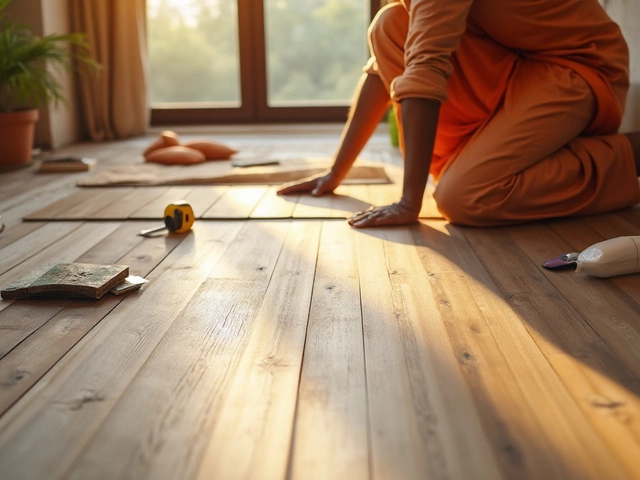If you walk into a home and instantly feel like you have more breathing room, chances are you’re looking at modern decor. This style is all about keeping things simple but comfortable—imagine open layouts and big windows instead of clutter and heavy furniture. You won't find a bunch of knick-knacks laying around; everything has its place and serves a real function.
You see a lot of neutral shades like whites, grays, and earthy tones, making spaces look bigger and brighter. If you want your place to look up-to-date, stick with that palette as your base. Then you can add bold pops of color—like a yellow chair or teal throw pillow—if you want a bit of personality without making things feel chaotic.
- Clean Lines and Open Spaces
- Popular Color Schemes
- Mixing Materials and Textures
- Functional, Practical Furniture
- Tech and Smart Home Trends
- Personal Touches and Greenery
Clean Lines and Open Spaces
If you want your space to look truly modern, think of lines that are straight, flat, and not too busy. These clean lines make rooms look organized and relaxed, which is one big reason why modern home decor feels so inviting. Uncluttered spaces help you see what matters—like your comfy sofa or your favorite piece of art—instead of a jumble of stuff.
Big, open spaces are another thing you’ll see everywhere now. Open-plan kitchens that flow into the living room or dining areas are super common. This isn’t just about looks. According to a 2023 Houzz report, 62% of homeowners remodeling their main living areas wanted open floor plans for better entertaining and more natural light.
Martha Stewart once put it simply: “Open spaces free your mind and body. Clutter only distracts.”
If you’re trying to get this look in your own place, here’s what works:
- Pick furniture with straight edges and skip the extra decorations or carvings.
- Use built-in storage like shelves and hidden cabinets to keep your stuff out of sight.
- Let in as much natural light as possible. Ditch thick curtains for lighter shades or blinds.
- Stick with two or three main pieces of furniture per room—think sofa, coffee table, and one chair.
Curious about how much of a difference open layouts really make? Here’s a quick look at how they’re trending in new builds:
| Year | % of New Homes with Open Layout |
|---|---|
| 2016 | 46% |
| 2020 | 58% |
| 2023 | 66% |
So, open spaces aren’t just a fad—they’re how most people are choosing to live right now. With fewer walls and more flexibility, it’s easier to relax, host friends, or just let your dog stretch out on the floor like Max does every weekend.
Popular Color Schemes
Modern home decor leans heavily on a neutral base. You’ll notice lots of white, black, gray, and various shades of beige in up-to-date living rooms, kitchens, and even bedrooms. This isn’t just about playing it safe—it’s because these colors make rooms look clean, big, and bright. The trick is to create a calm backdrop, so anything you add on top—like art, furniture, or plants—really stands out.
If you want your space to pop, use one or two accent colors. Right now, deep greens, mustard yellows, and navy blues are everywhere. You might spot a forest green sofa or some navy throw pillows in the most-followed Instagram homes. But don’t toss out the basics; those neutral walls and floors keep your place from looking too busy or overwhelming.
Lately, people are mixing in earthy vibes. Terracotta pots, sandy pinks, and natural wood tones show up to make rooms a bit warmer. Even matte black is hot for kitchen cabinets and light fixtures thanks to its sharp, modern look.
- Go for light, simple walls (think eggshell white, pale gray, or soft taupe).
- Add a statement piece in a bold shade—like a modern velvet chair or a bright area rug.
- Mix materials with color—black metal, blonde wood, or brass for a little shine.
- Layer different textures (cotton, leather, linen) in similar colors to keep things cozy but uncluttered.
Don’t forget: lighting changes how colors feel. Before you go all-in on paint or décor, check how everything looks at different times of day. Grab a few sample pots and test spots on your wall first. The right color scheme isn’t about sticking to a rule—it’s about making your space feel fresh and personal without going overboard.
Mixing Materials and Textures
Modern home decor is rarely about using just one type of material or finish. In fact, the whole idea is to keep things interesting by mixing different surfaces and textures. You’ll often see metal next to wood, or soft fabrics paired up with things like glass and stone. This kind of mix stops a room from feeling boring and gives it that put-together, designer look.
For example, you might see a wooden coffee table on top of a jute rug, with a metal lamp sitting nearby. Or maybe there’s a leather sofa covered in chunky knit throws. Don’t worry about everything matching perfectly—that’s not the goal. It’s actually better if the materials feel a bit different, as long as everything sits within a similar color scheme.
If you’re not sure where to start, here’s what usually works best in modern homes:
- Wood and Metal: A sturdy oak dining table gets a modern edge with sleek metal chairs or light fixtures.
- Glass and Fabric: A clear coffee table makes the space look open, while a soft area rug gives your feet a break.
- Concrete and Leather: Concrete counters or planters mixed with a leather chair give off an instant cool vibe.
Texture matters just as much as the materials. For textiles, go for mixes like linen curtains, velvet throw pillows, or nubby wool rugs. Laying textures on top of each other—like a smooth wooden floor with a puffy rug—adds comfort and stops the space from feeling cold.
Pro tip: always keep one or two textures as the stars while the rest stay in the background. If you overdo it, the space can feel hectic. And if you have pets (like my dog Max), think about materials that can handle a bit of wear and tear, like performance fabrics or faux suede. It looks sharp and stands up to the chaos of daily life.
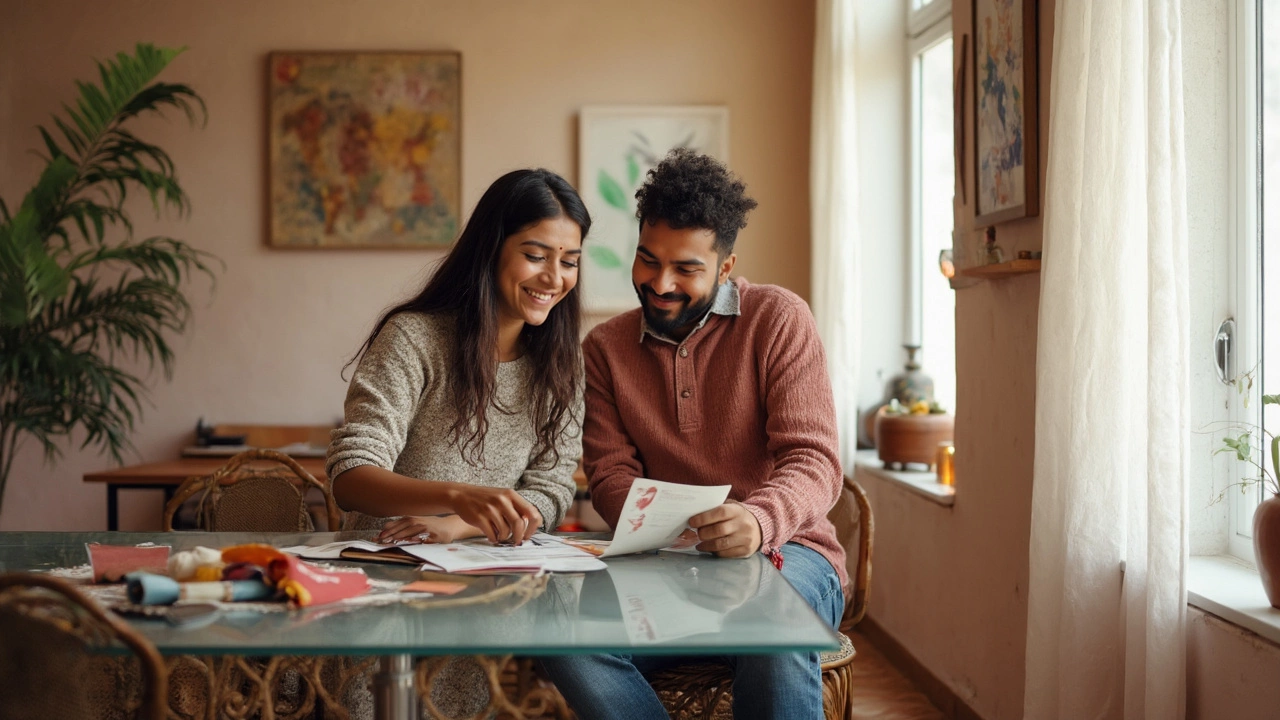
Functional, Practical Furniture
If there’s something that every modern home has in common, it’s furniture that actually works for how we live today. Instead of bulky cabinets and fragile coffee tables you’re scared to use, modern design leans into simple shapes and pieces that double up on function. Think sofas with built-in USB ports, coffee tables that lift for working on your laptop, or beds with clever storage underneath. That’s the stuff folks are snapping up this year.
Here’s something interesting: a 2023 survey by Statista showed that 59% of homeowners value furniture that offers storage solutions or has multiple uses. That’s probably why ottomans with hidden compartments and wall-mounted desks have started showing up everywhere. We want our furniture to be smart, easy to move, and not take up more space than it needs to.
"Good design keeps the user in mind, making every inch count while keeping comfort and style intact," says Emily Henderson, a leading interiors expert.
Shopping for modern furniture means looking at how every piece can earn its keep. Here are some tips if you're updating your space:
- Pick pieces with clean lines and simple designs—they’re easier to fit into open layouts.
- Look for furniture you can move around when you need to (lightweight sofas, stackable chairs).
- Choose surfaces that are easy to clean—life happens, and nobody wants high-maintenance stuff.
- Invest in things like shelves, cabinets, or benches with built-in organizers to control clutter.
Check out the popularity growth for key modern furniture features over the last 5 years:
| Feature | 2019 | 2021 | 2024 |
|---|---|---|---|
| Modular/Convertible Design | 35% | 48% | 61% |
| Built-in Storage | 47% | 52% | 59% |
| Tech Integration | 11% | 28% | 45% |
This move towards furniture that just makes sense is more than a trend—it’s how people actually want to live right now. When every piece does double duty and fits your lifestyle, your space works for you, not the other way around.
Tech and Smart Home Trends
Modern home decor isn’t just about cool furniture and paint colors. Tech is right in the mix now, shaping the way homes look and work. You’ll usually spot smart speakers, sleek thermostats, and even lights you control with your phone. These gadgets aren’t just for show—they actually make life a lot easier. Statistically speaking, about 53% of homes in the U.S. have at least one smart device, according to a 2024 national housing study.
The best part? Most smart home stuff like Google Nest, Amazon Echo, or Philips Hue doesn’t stick out. Their clean designs fit right into a modern space. Nobody wants to stare at a bulky router or messy cords, so companies are keeping those things neat and even stylish.
Common features of a modern, tech-boosted home include:
- Voice control for everything from lights to music (just tell Alexa what you want)
- Automated routines, like shades that lower when you leave or lights that wake you up at sunrise
- Security cams that show you who’s at the door—direct to your phone
- Robot vacuums (Max, my dog, still isn’t sure how he feels about them)
Here’s a quick look at what people actually use most:
| Device Type | % of Households with Device |
|---|---|
| Smart Speakers | 39% |
| Smart Thermostats | 27% |
| Smart Lighting | 22% |
| Smart Security (Cameras, Locks) | 18% |
If you’re thinking about upgrading your place, start small—maybe with a smart plug or a doorbell cam. Most of these gadgets work together, so you can add more later. Modern homes aren’t about showing off tech for the sake of it. It’s about real-life benefits, like making things easier, safer, and honestly, just a little more fun.
Personal Touches and Greenery
Walking into a place that looks modern shouldn’t feel like stepping into a hotel lobby. That’s where personal touches come in. Think about family photos in sleek frames, travel souvenirs arranged on a floating shelf, or your favorite books stacked next to the couch. These things make the space feel like yours, not just some random design off Instagram.
The same goes for greenery. There’s a big trend right now: people add plants to dial up the vibe and literally freshen the air. Houseplants do more than look good—they help filter toxins and boost mood. Snake plants, pothos, and peace lilies are common picks since they’re easy to keep alive, even if you forget to water them now and then. Fun fact: NASA ran a study showing houseplants can remove up to 87% of air toxins in 24 hours.
If you’re not great with plants, try succulents or artificial greens that look real. Just the look of something leafy softens the sharper lines of modern design and makes rooms feel more laid-back. You can even hang a couple of planters from the ceiling, or set up a small herb garden on the windowsill—handy and good-looking.
Here’s a quick look at some easy-care plants and their benefits:
| Plant Name | Main Benefit | Water Needs |
|---|---|---|
| Snake Plant | Air purification | Once every 2-3 weeks |
| Pothos | Removes toxins | Once a week |
| Peace Lily | Good for humidity | Once a week |
| Succulents | Low maintenance | Every 3-4 weeks |
If you want a quick checklist for adding personality to your space, try this:
- Pick a few favorite photos or art pieces and put them in matching frames.
- Add a signature scent—maybe a soy candle with a clean smell.
- Place a small plant or two in every main room.
- Leave out something personal, like a favorite mug or vinyl record, on display.
- Rotate out seasonal items—throw blankets in winter, or a new plant pot for spring.
The gist: Your space can look sharp and stylish, but it won’t feel like home until there’s a bit of you—and probably a bit of green—sprinkled in.
